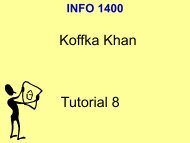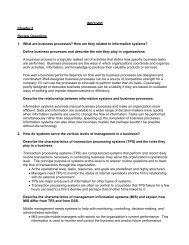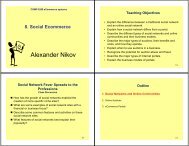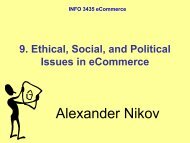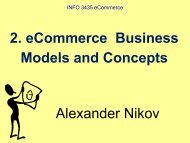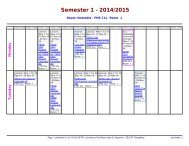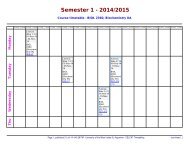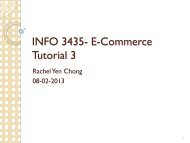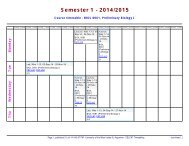Information systems and organisational issues
Information systems and organisational issues
Information systems and organisational issues
- No tags were found...
Create successful ePaper yourself
Turn your PDF publications into a flip-book with our unique Google optimized e-Paper software.
Outline1. Organizations <strong>and</strong> <strong>Information</strong> Systems2. How <strong>Information</strong> Systems Impact Organizations <strong>and</strong>Business Firms3. Using <strong>Information</strong> Systems to AchieveCompetitive AdvantageUsing <strong>Information</strong> Systems to AchieveCompetitive Advantage•Why do some firms become leaders in their industry?• Michael Porter’s competitive forces model–Provides general view of firm, its competitors, <strong>and</strong>environment–Five competitive forces shape fate of firm1. Traditional competitors2. New market entrants3. Substitute products <strong>and</strong> services4. Customers5. Suppliers3-3334 © Prentice Hall 2011 3-34Porter’s Competitive Forces ModelPorter’s Competitive Forces Model (cont.)FIGURE 3-10In Porter’s competitive forces model, the strategic position of the firm <strong>and</strong> itsstrategies are determined not only by competition with its traditional directcompetitors but also by four other forces in the industry’s environment: newmarket entrants, substitute products, customers, <strong>and</strong> suppliers.•Traditional competitors–All firms share market space with competitors whoare continuously devising new products, services,efficiencies, switching costs•New market entrants–Some industries have high barriers to entry, e.g.computer chip business–New companies have new equipment, youngerworkers, but little br<strong>and</strong> recognition35 © Prentice Hall 2011 3-3536 © Prentice Hall 2011 3-36



